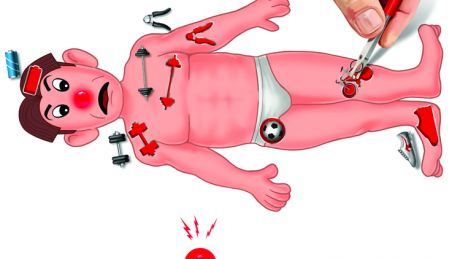How To Injury-Proof Your Body
The old adage is wrong – staying pain-free is key to being at your best. Here’s how to build an injury-proof body

If your approach to gym-sustained injury is to tough it out, harden up or some other hashtaggable catchphrase that sounds better than it works, then it’s time to rethink your strategy. Pain is there to warn you of something gone awry – and often, by the time it manifests, your training’s already starting to suffer. Instead, pay attention to your body and head off problems as they start to surface. In the long run, you’ll be fitter, stronger and tougher, with no need to put yourself under the knife.
CNS overload
The central nervous system is responsible for muscle activity as well as nerve responses and if you train hard, constantly pushing your body towards failure, for long periods you will overload your CNS. Warning signs include a dip in performance, frequently interrupted sleep, weight loss and illness. Avoiding the condition is pretty simple: allow better recovery from intense training.
Bench press shoulder
‘To avoid this you need to strengthen your rotator cuff at shoulder height,’ says Alex Hunter, clinical director at SixPhysio. ‘Grasp a light dumbbell and sit on a bench with one leg up in front of you. Place your elbow on that knee. Keeping a 90˚ bend in your elbow, lower your forearm slowly across your body until it’s horizontal, then raise it back to the start.’
Pec tear
Stretch, stabilise and strengthen to avoid this painful injury. ‘Find a corner wall and place one hand at shoulder height on each wall, then slowly move your chest towards the corner,’ says physio Dr Michael Lee. ‘For stability, place a gym ball against a wall and do wall press-ups against it. For strength, wide-arm press-ups on the floor will target your pectoralis major.’
Bad grip
Getting finger numbness after a heavy-grip workout or chin-up session? The problem might originate with a trapped ulnar nerve at your elbow. You can fix it with a simple stretch. ‘While sitting, raise your arm to the side, palm up,’ says Lee. ‘Reach over and grasp the fingers of your raised hand with the opposite hand, bend your wrist back and pull your fingers towards your body. Hold this for 20 seconds.’
Five-a-side hip
First touch failing? That’s a warning. ‘The ball of your hip joint can grind against the socket,’ says Hunter. ‘To alleviate it, stand with your foot resting on a bench behind you, squeeze your glutes and bend your standing knee. Raise your trailing foot to your backside and continue to bend your standing knee until you feel a stretch in your thigh and the front of your hip. Hold for 20 seconds and repeat.’
Cyclist’s knee
Getting a burning sensation around your mid-thigh after a long ride? ‘ITB syndrome – overstrain of the iliotibial band on the outside of the thigh – is common among cyclists,’ says physiotherapist Emma James. ‘It can be caused by overtraining, but also by your bike. Ensure your saddle is not too low and foam roll along your leg. Target the outside of your thigh and pause on any sore spots.’
Get the Coach Newsletter
Sign up for workout ideas, training advice, reviews of the latest gear and more.
Runner’s foot
This pain needs to be stamped out early. ‘The thick ligament – the plantar fascia – pulls too much on the heel bone,’ says Hunter. ‘Strengthening your calf muscle can prevent this. Stand on one leg on the edge of a step and bend your knee 30˚. Maintain this while dropping your heel over the edge. Go as low as you can then up onto tiptoes, still with a bent knee.’ Repeat ten to 20 times and feel the burn.
Between 2014 and 2015, Andre Jackson was the web editor of Men’s Fitness UK, which predated and then shared a website with Coach. A love for climbing ropes and boarding slopes, he doesn’t have the most traditional of workout plans but he’s obsessed with finding out how much protein he can get from everything. His favorite gym move is double wave battle ropes, his favorite sports are football and snowboarding, and his personal best is conquering a V6 bouldering climbing wall.
